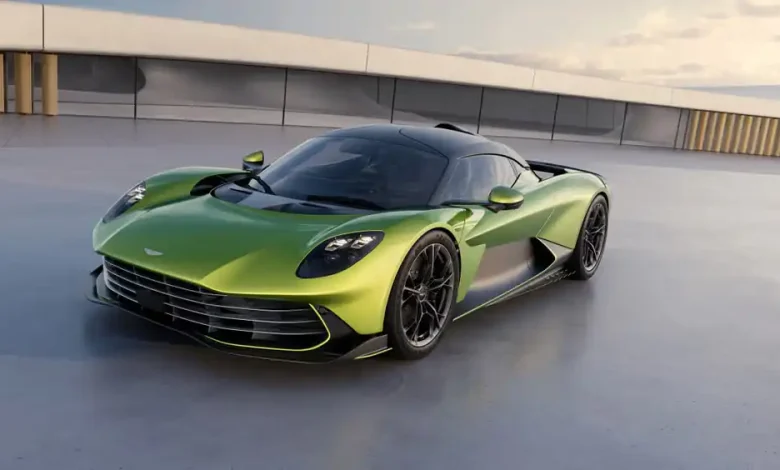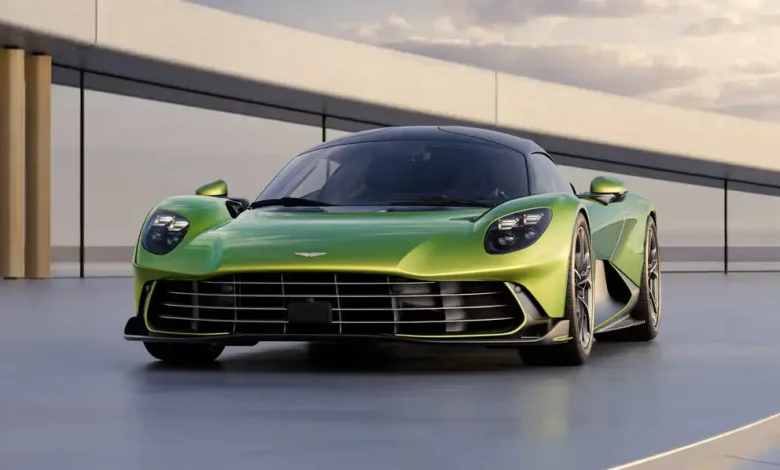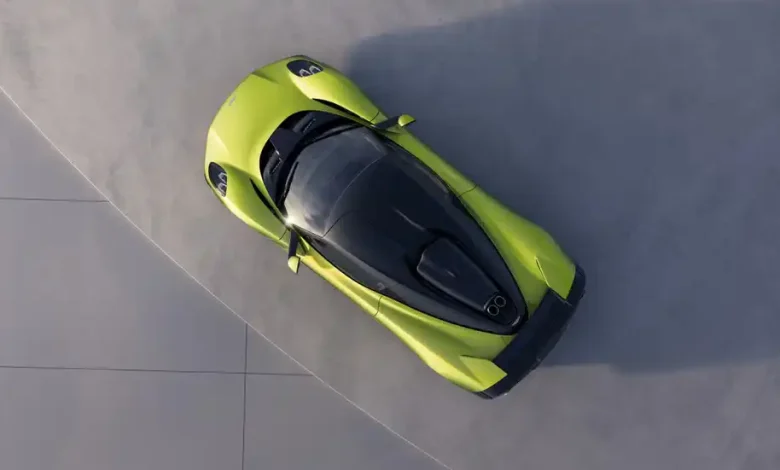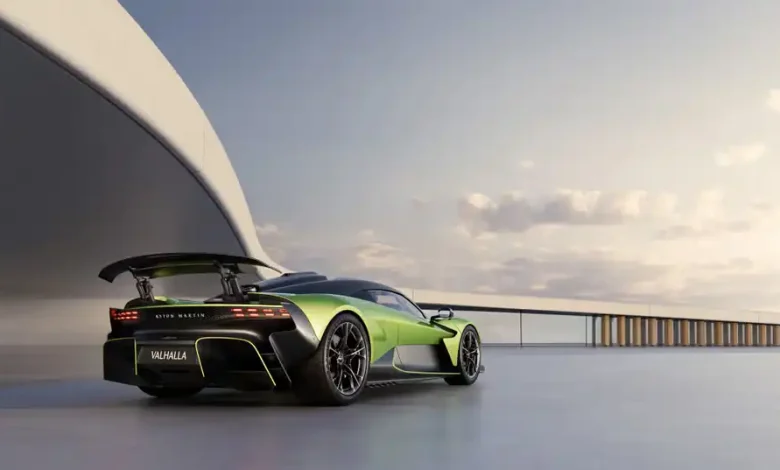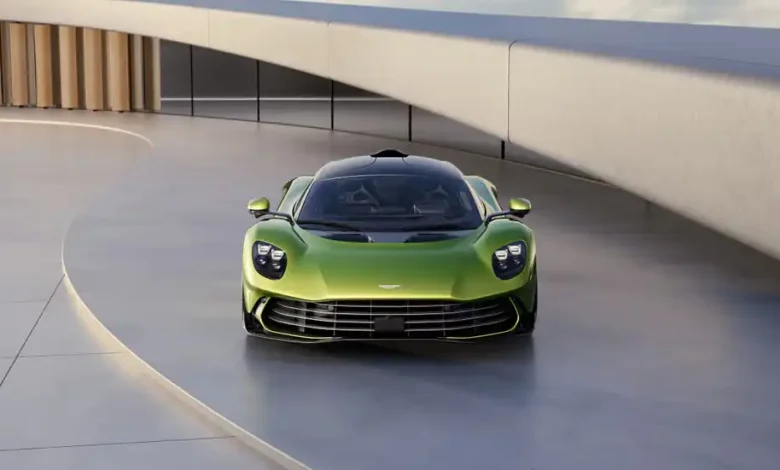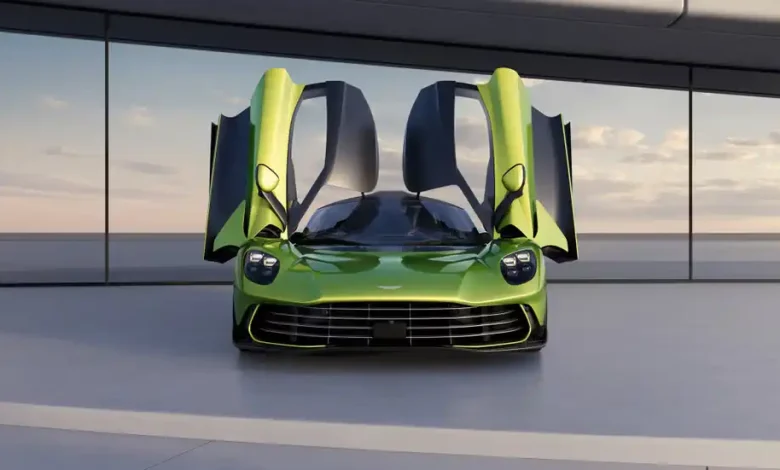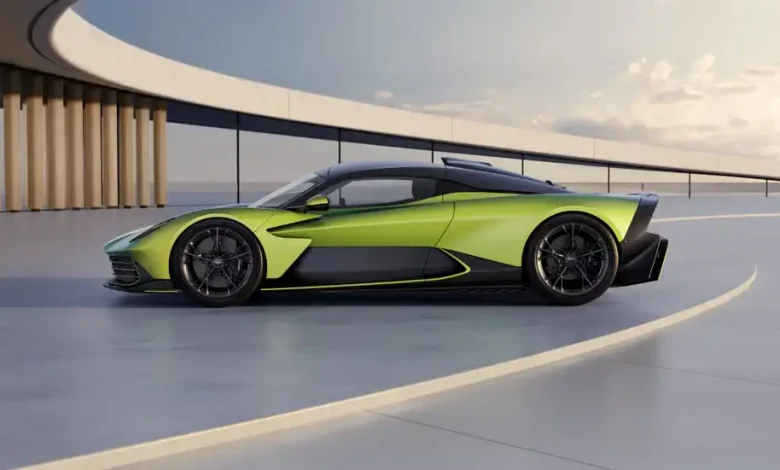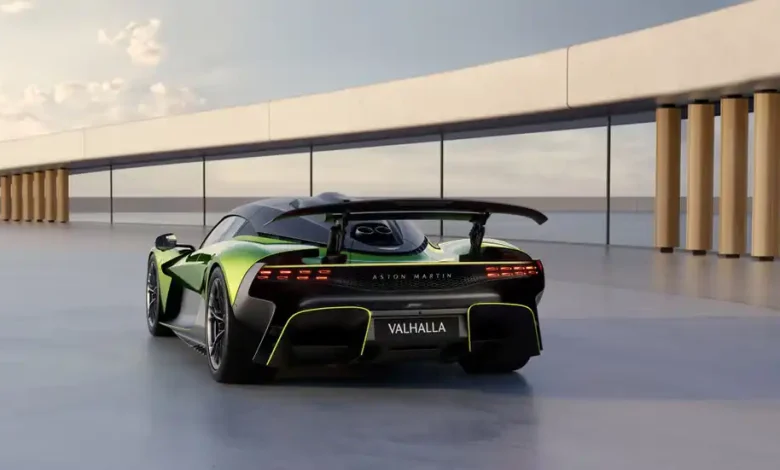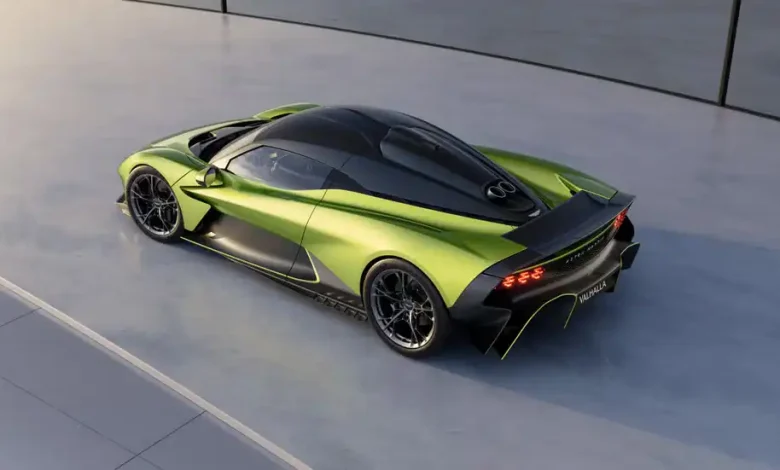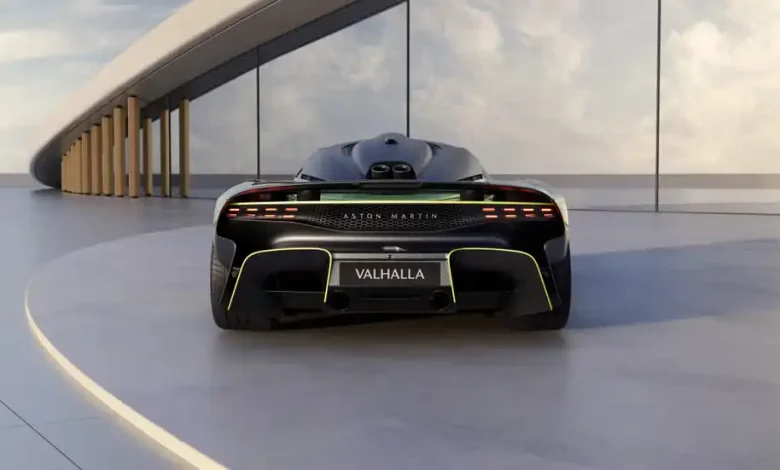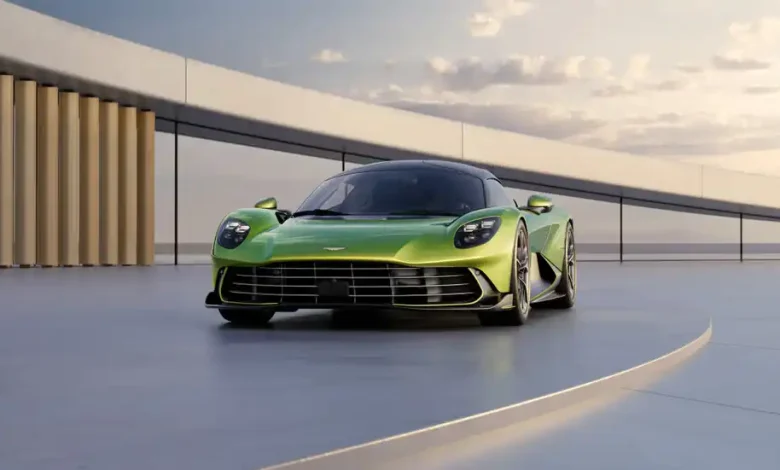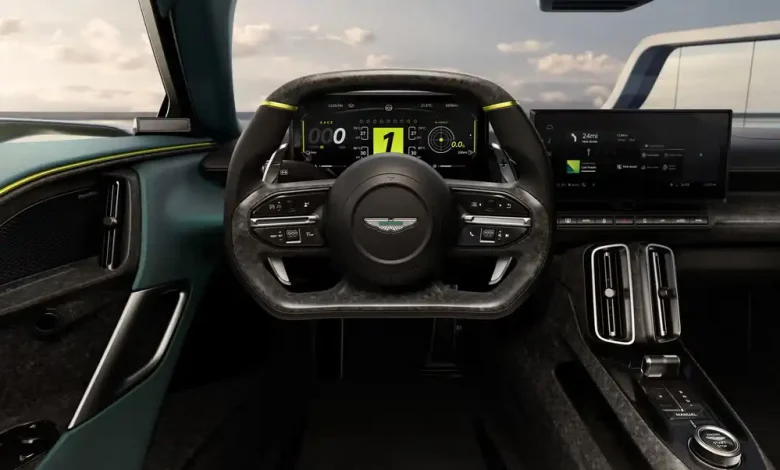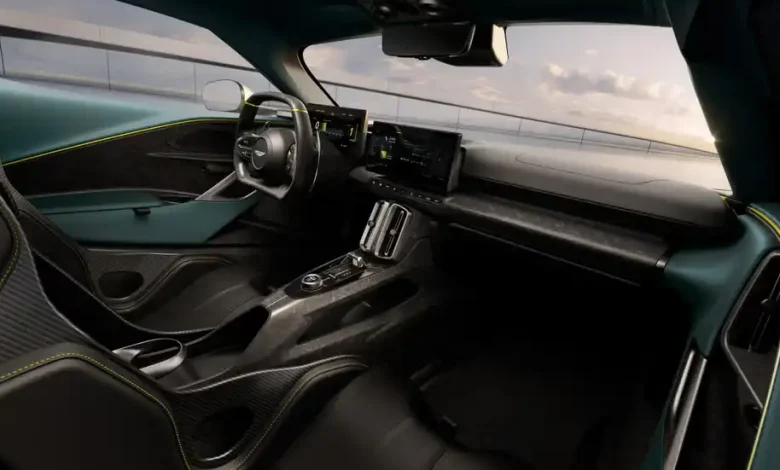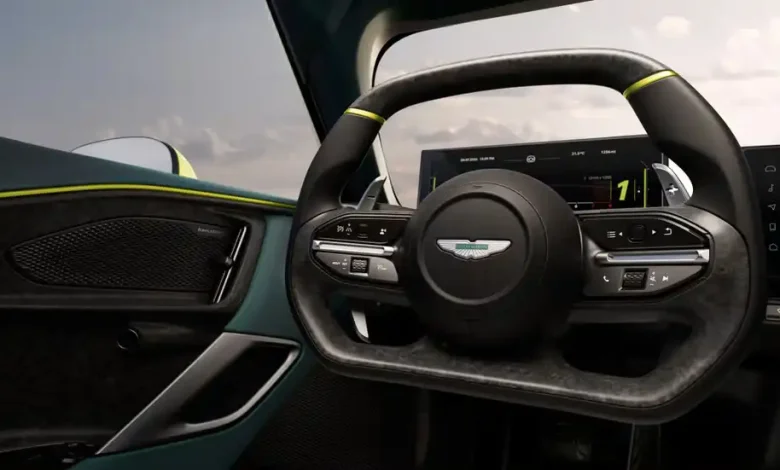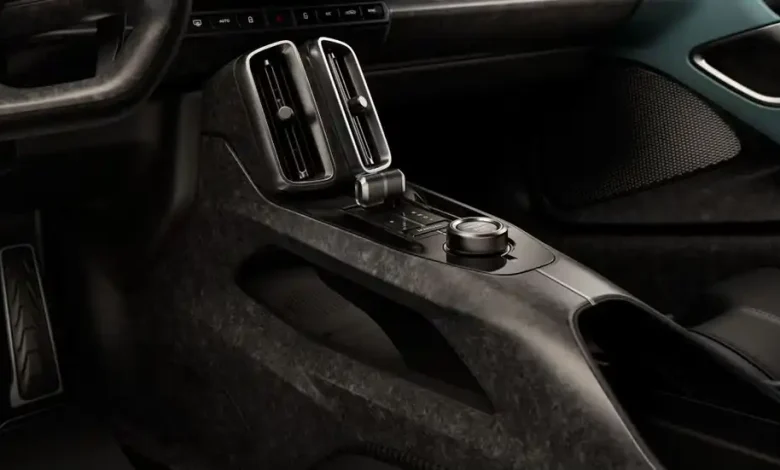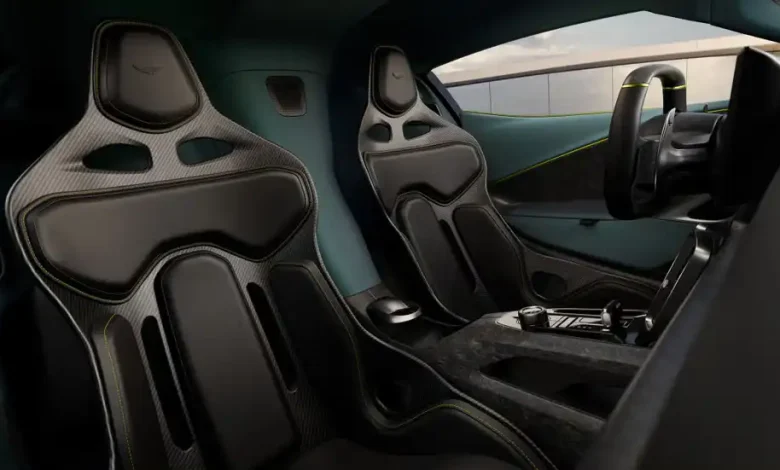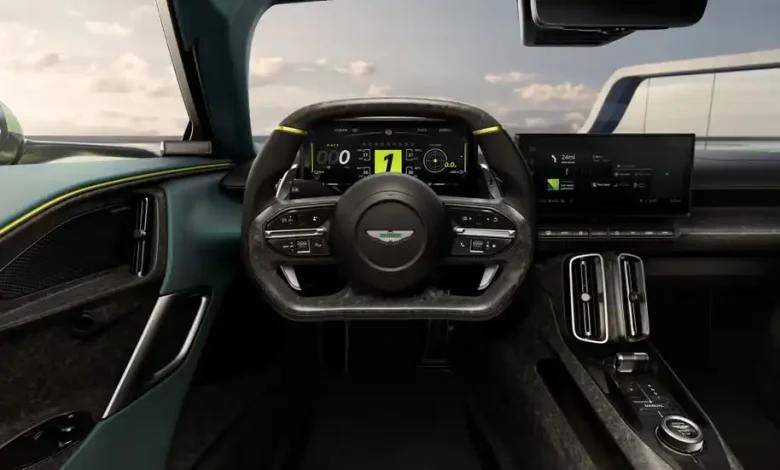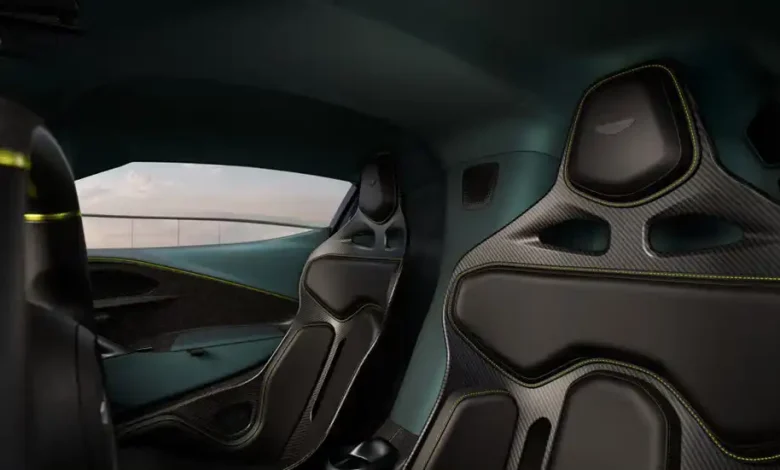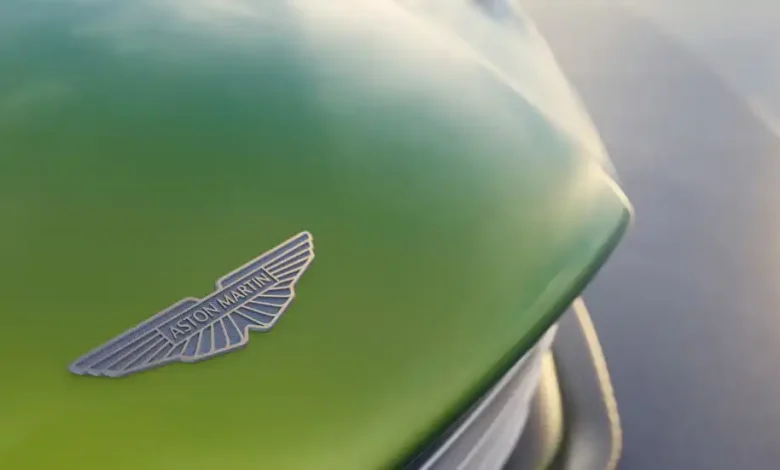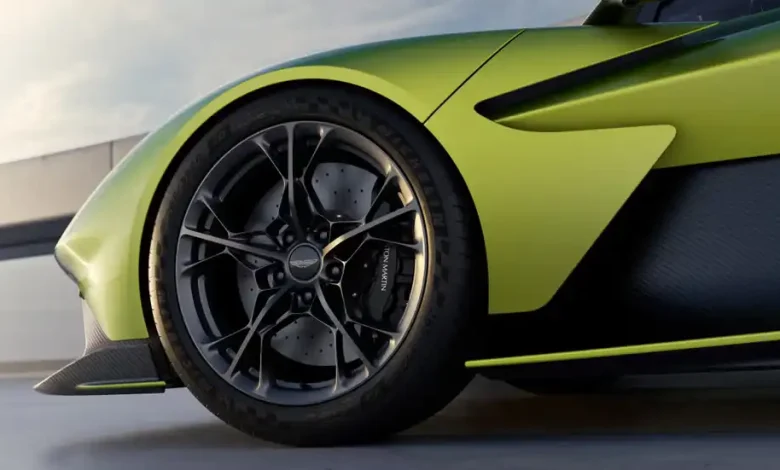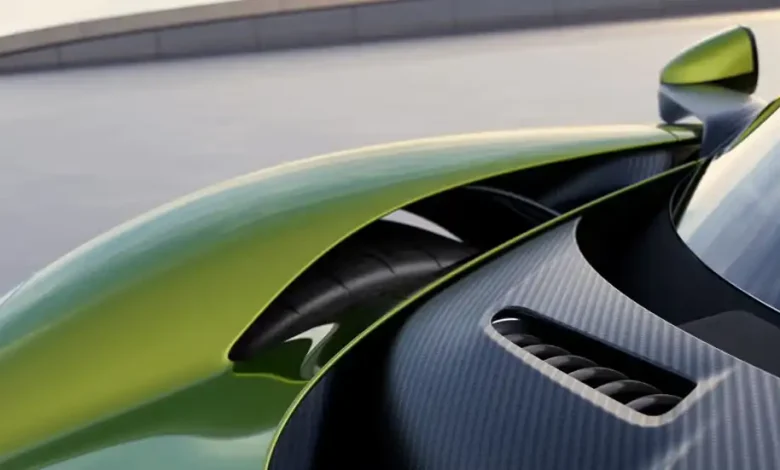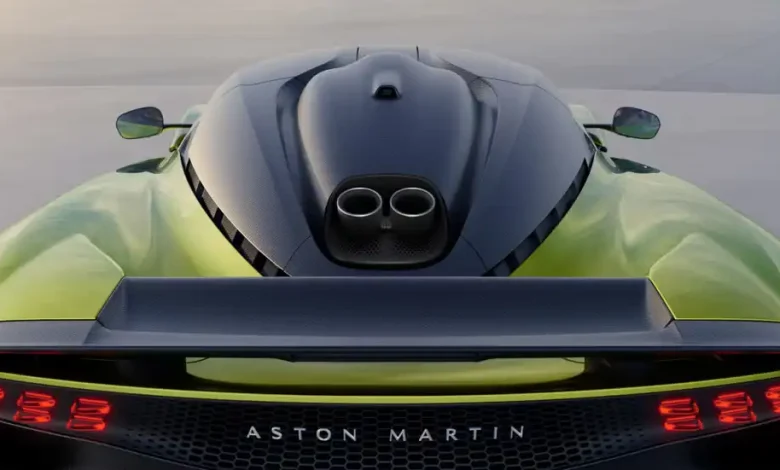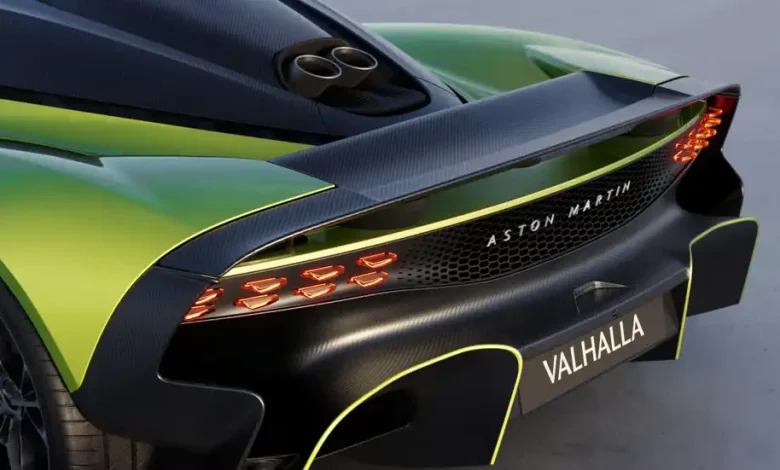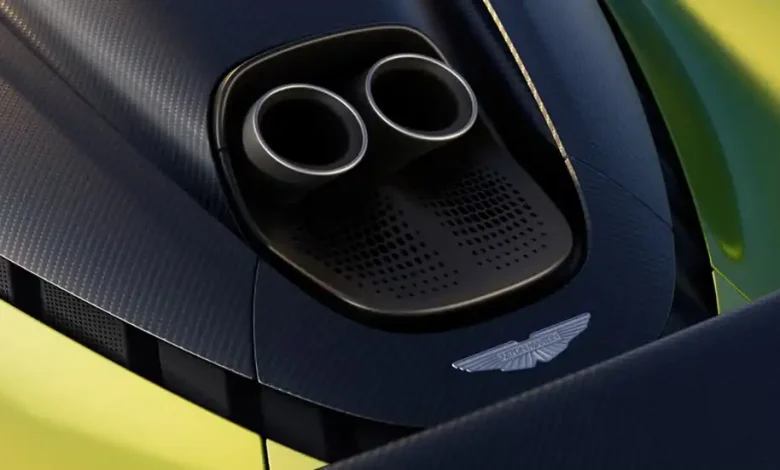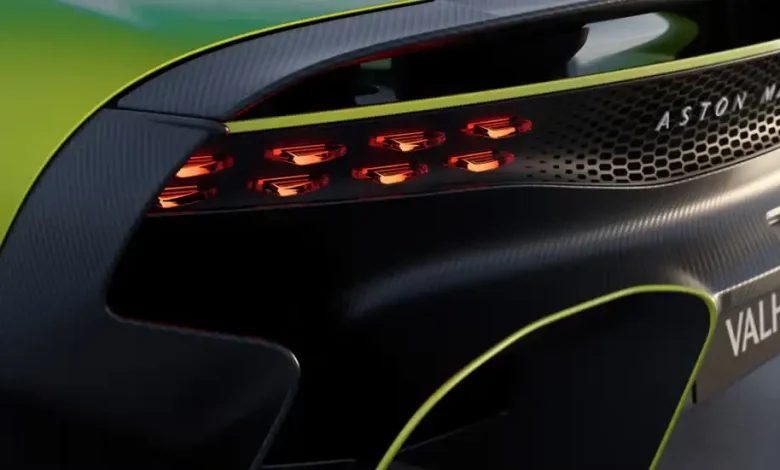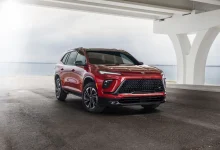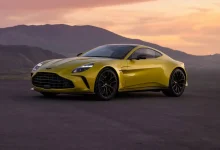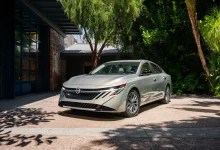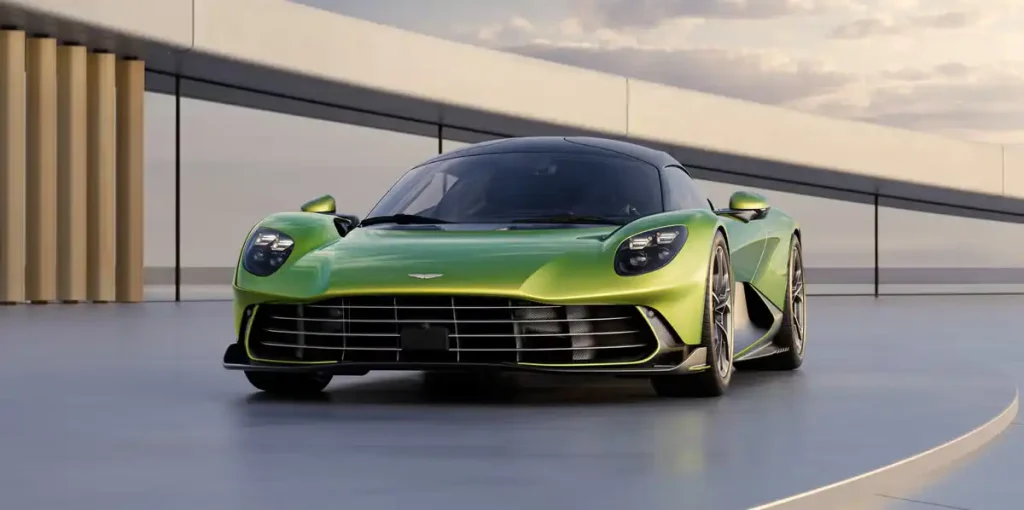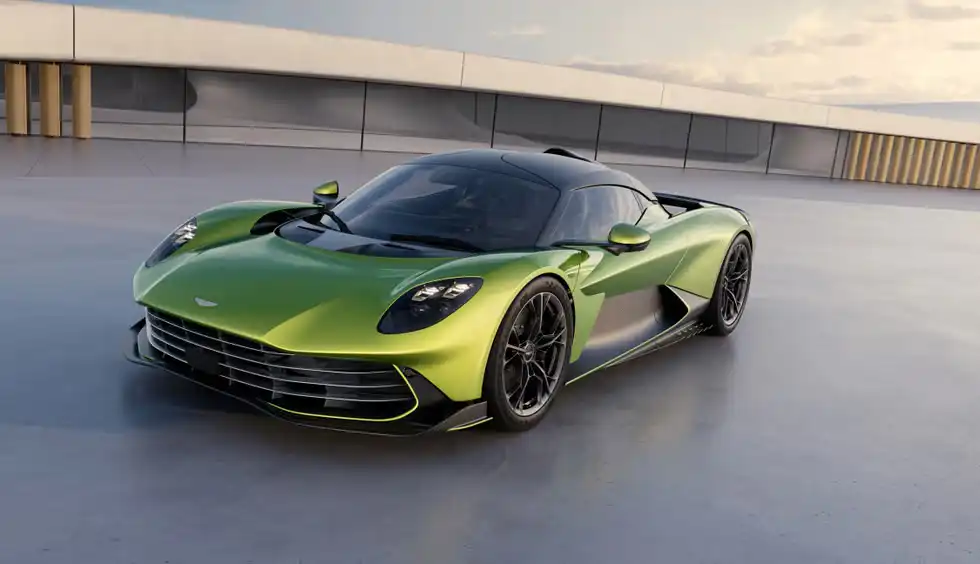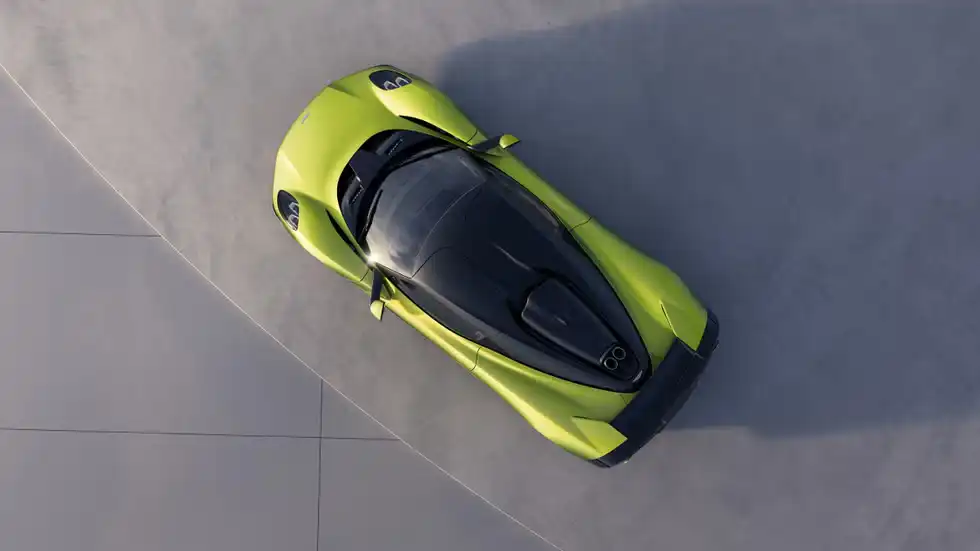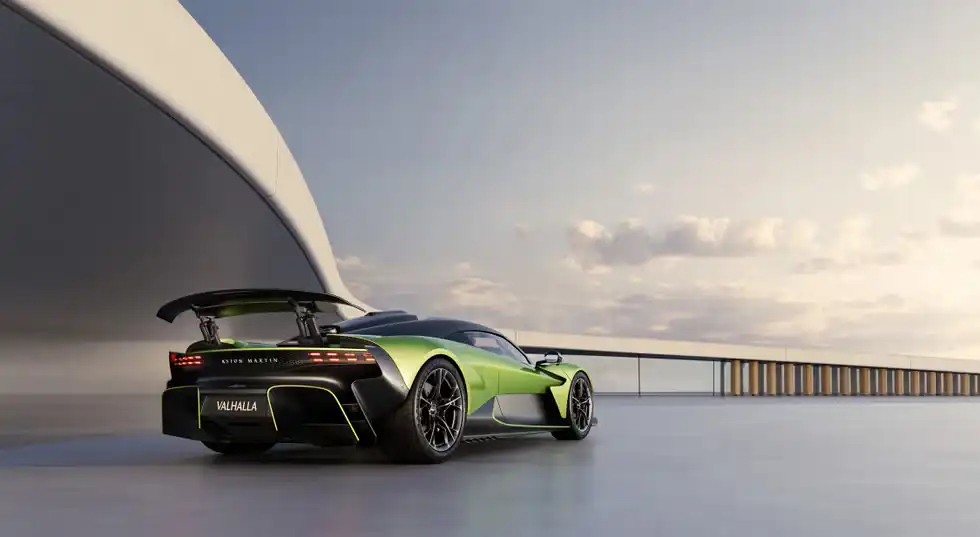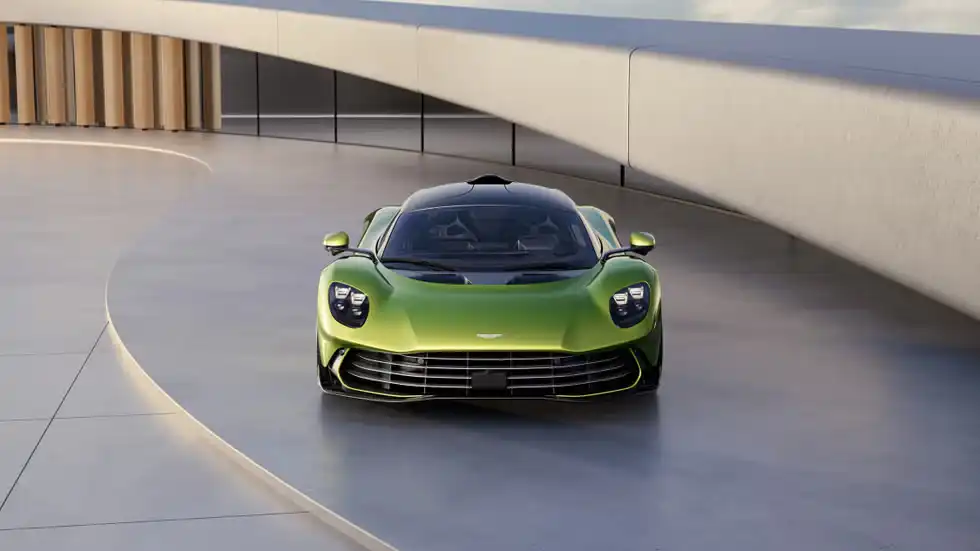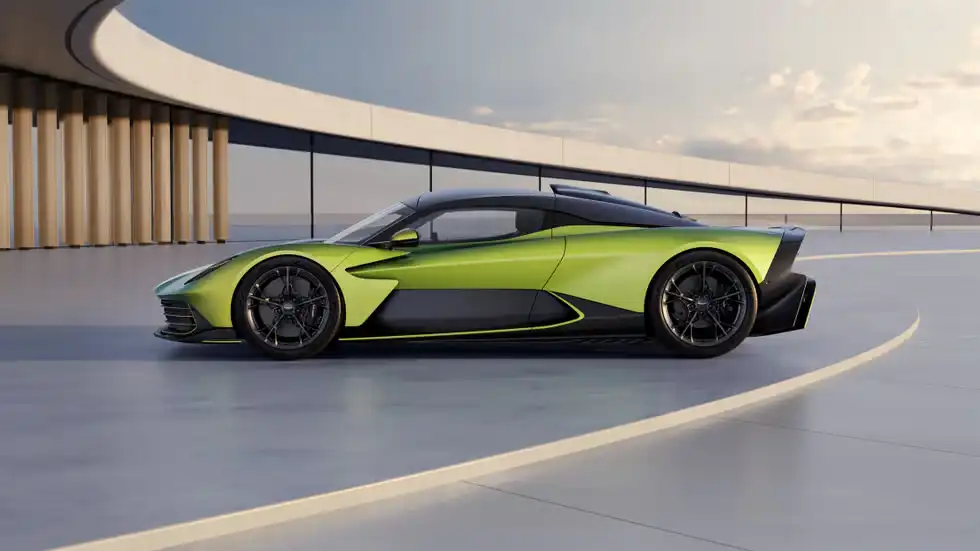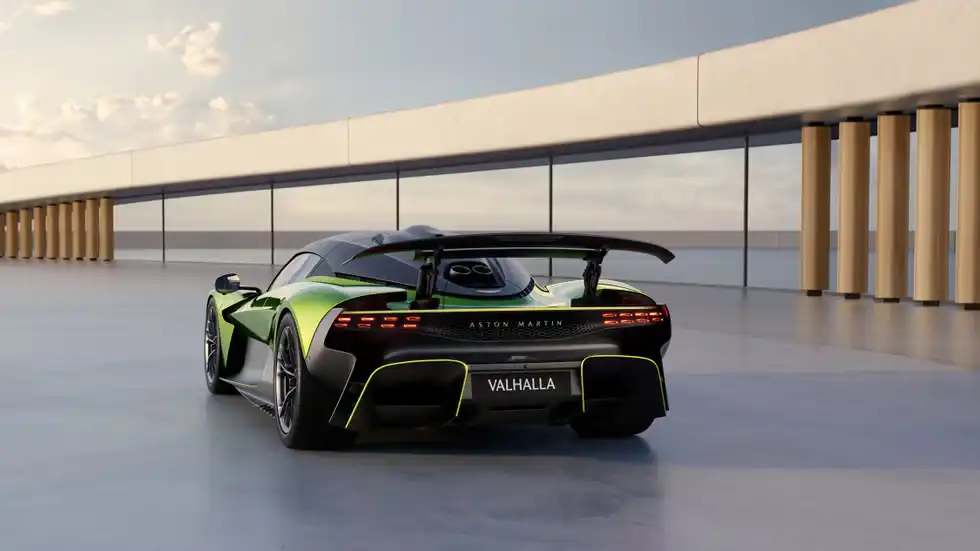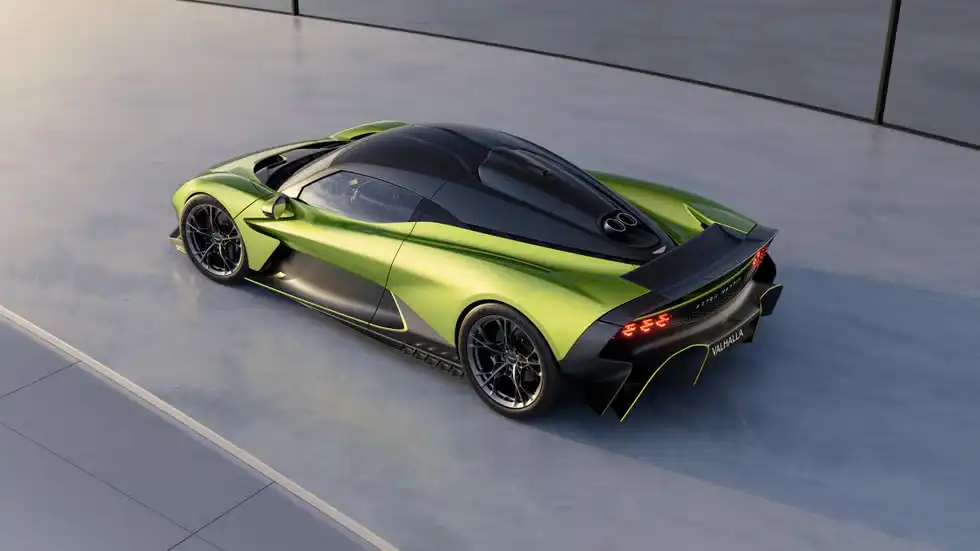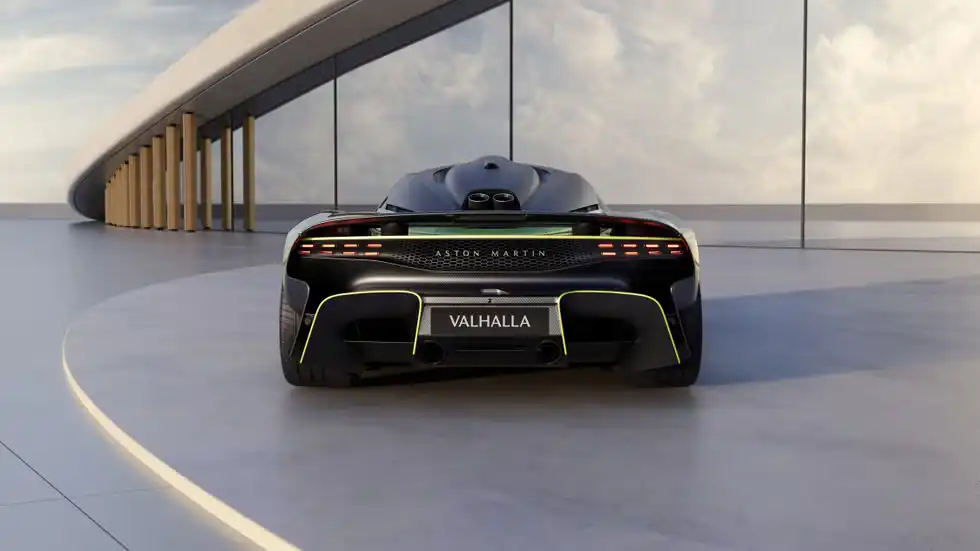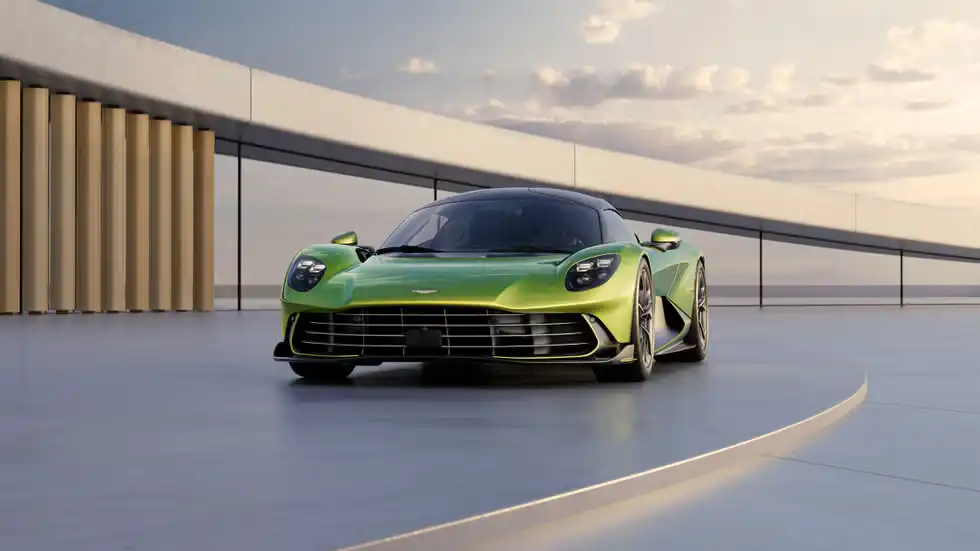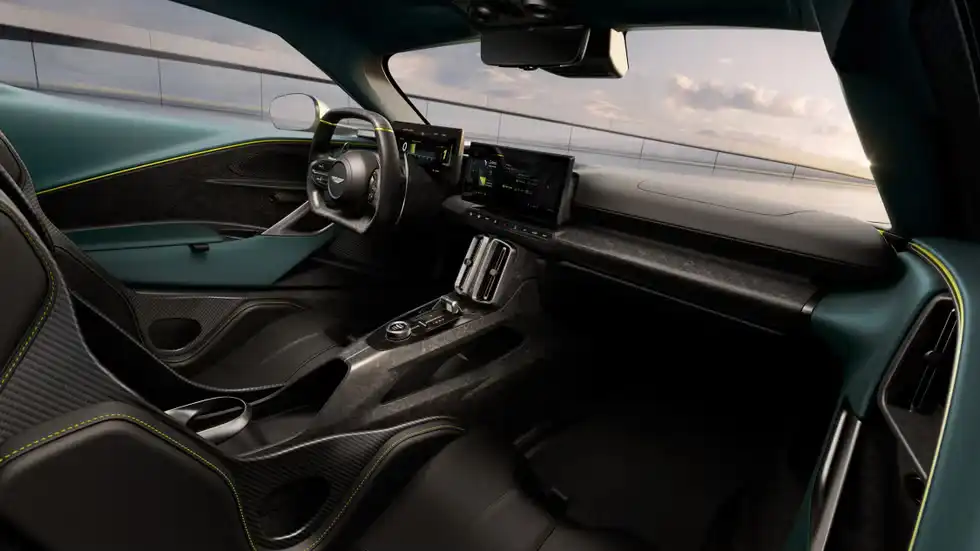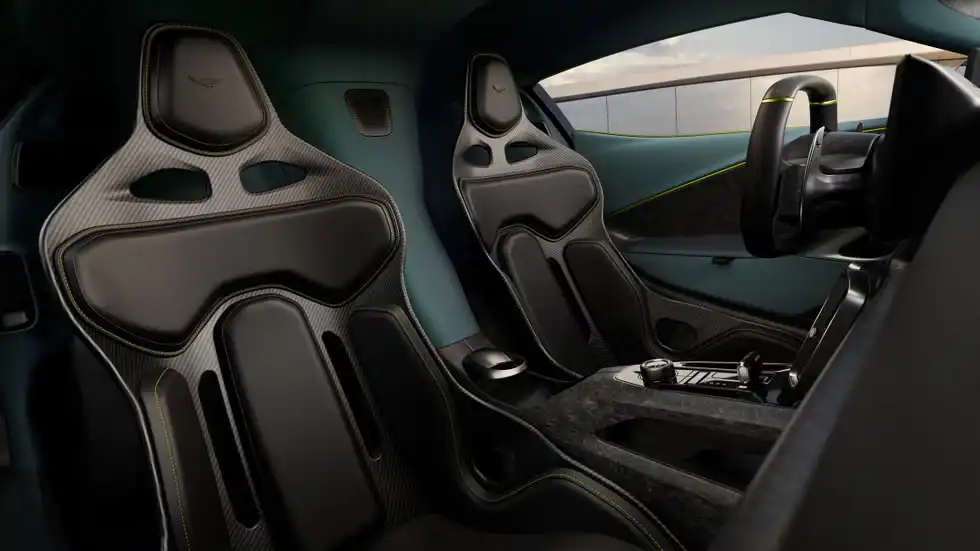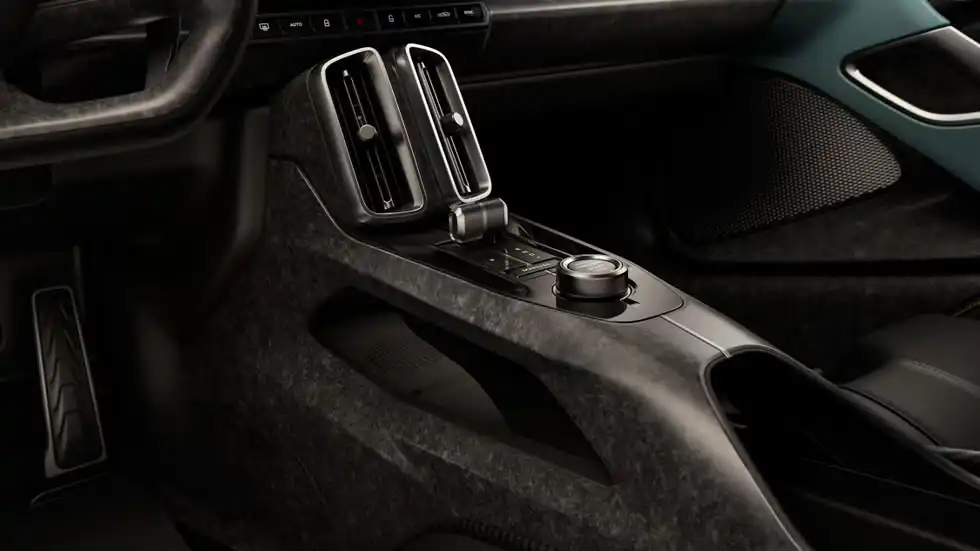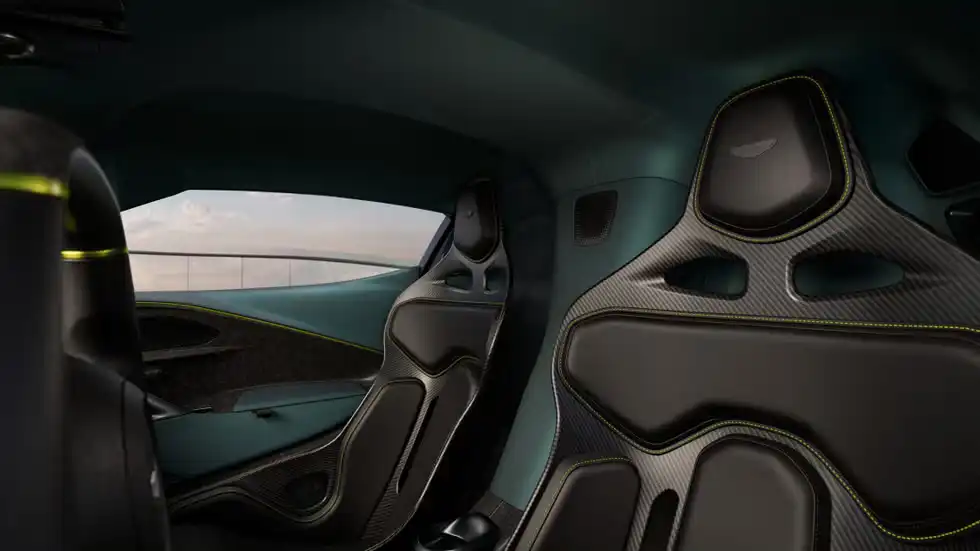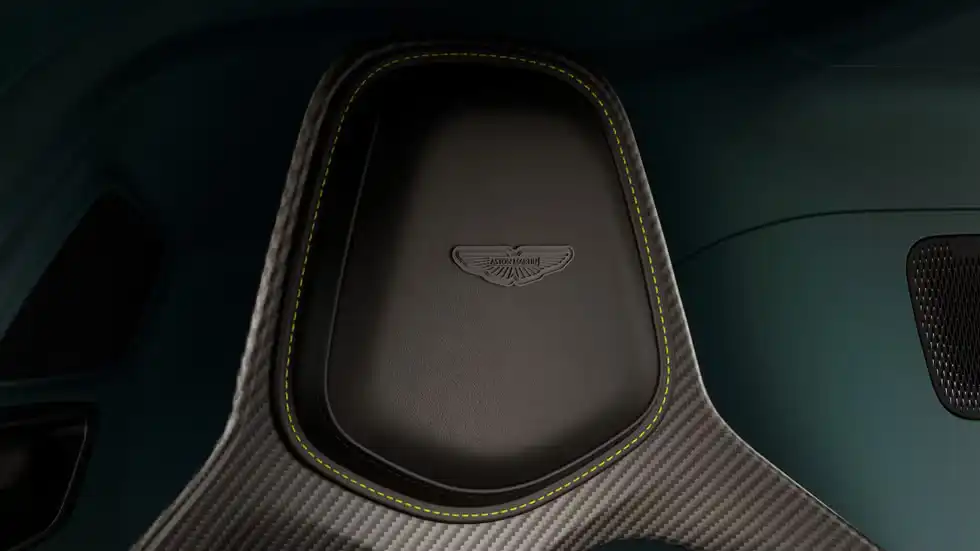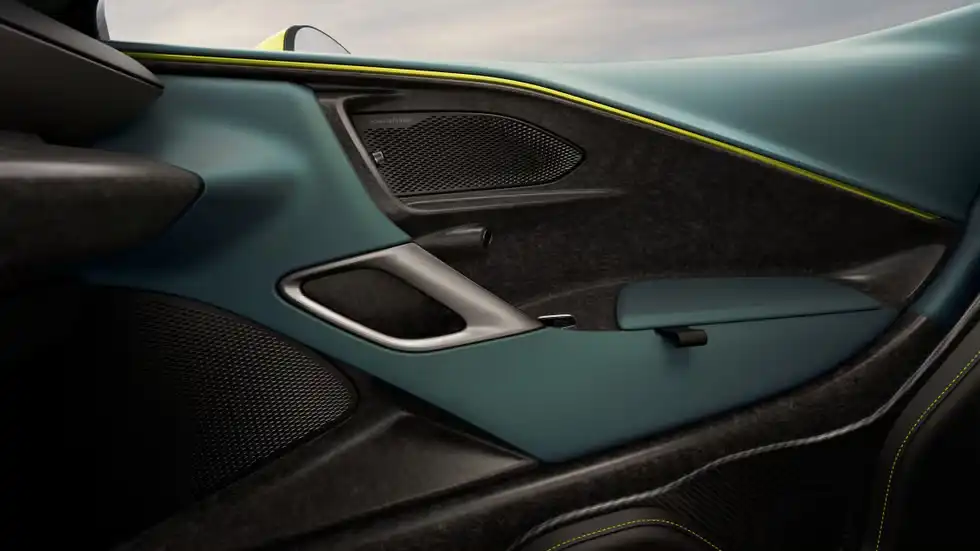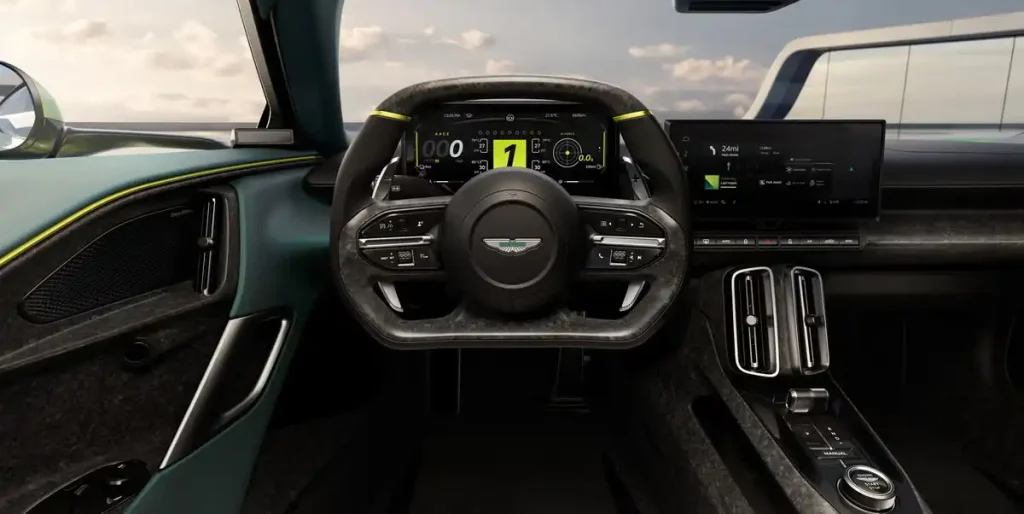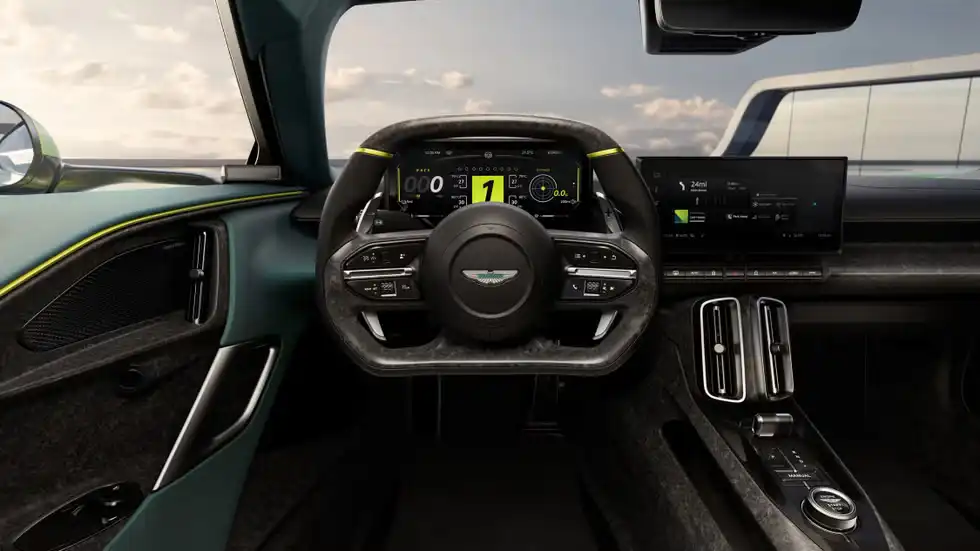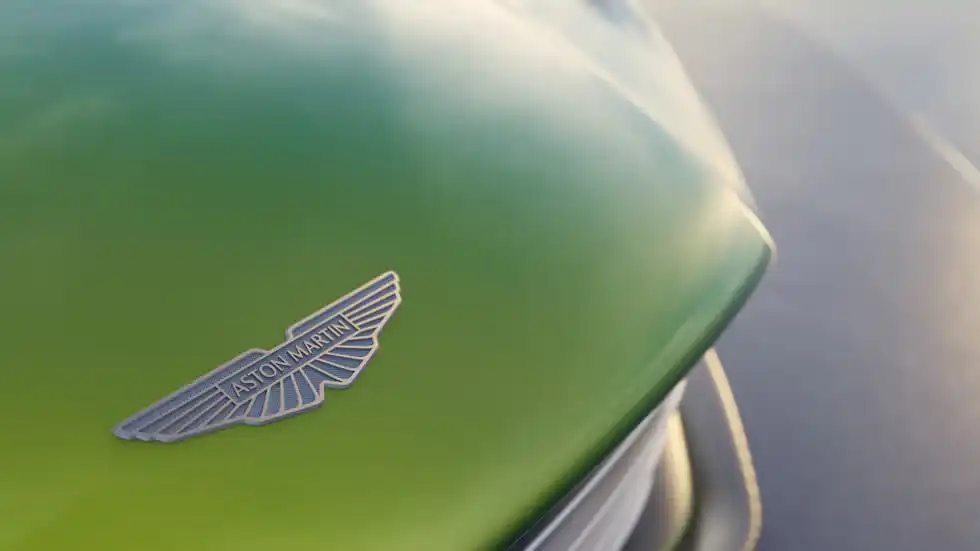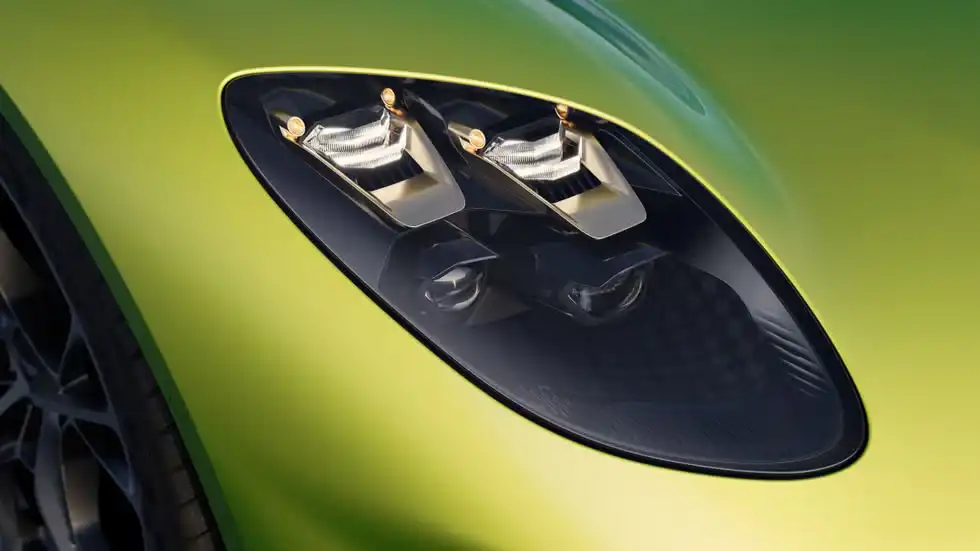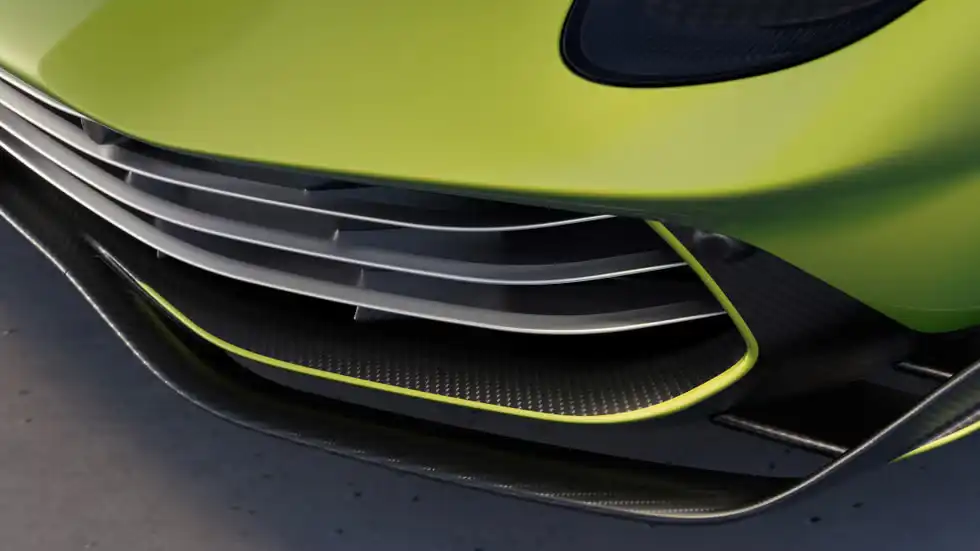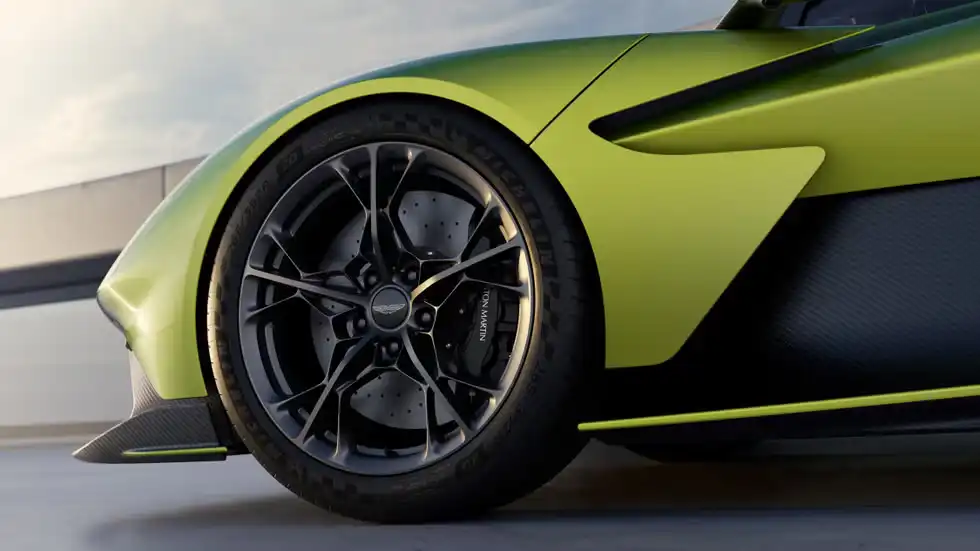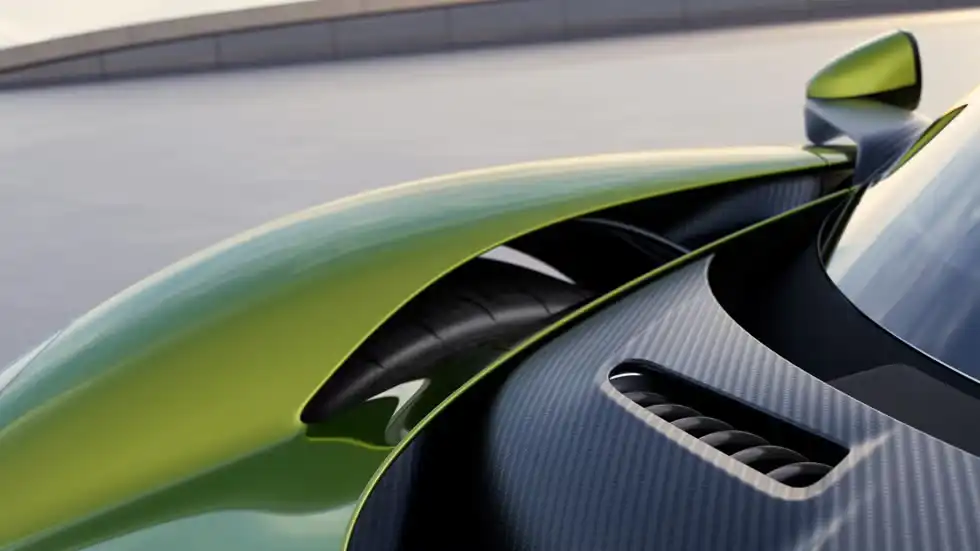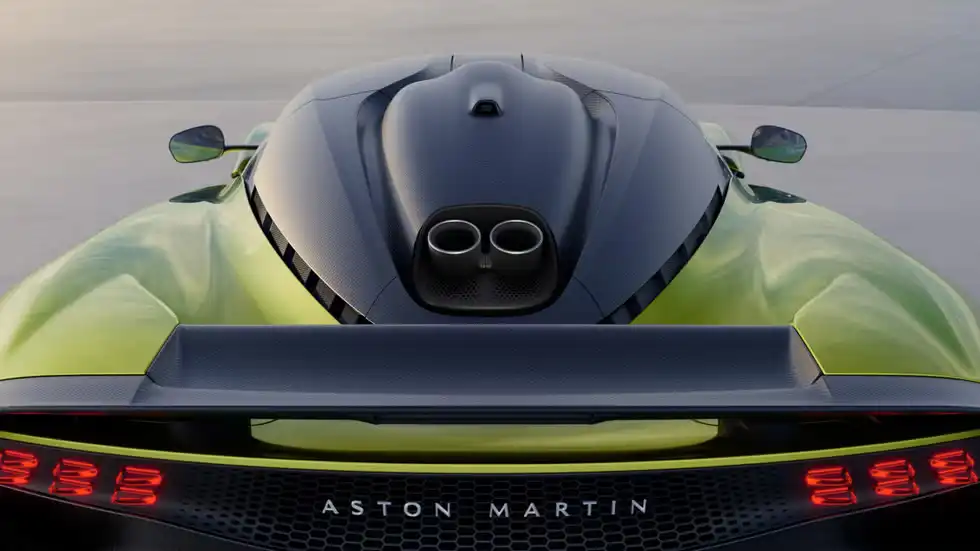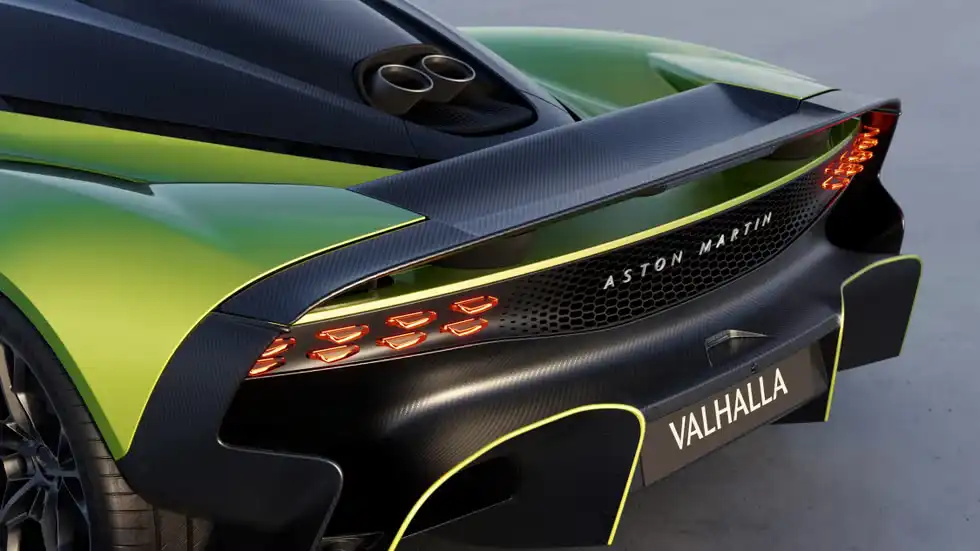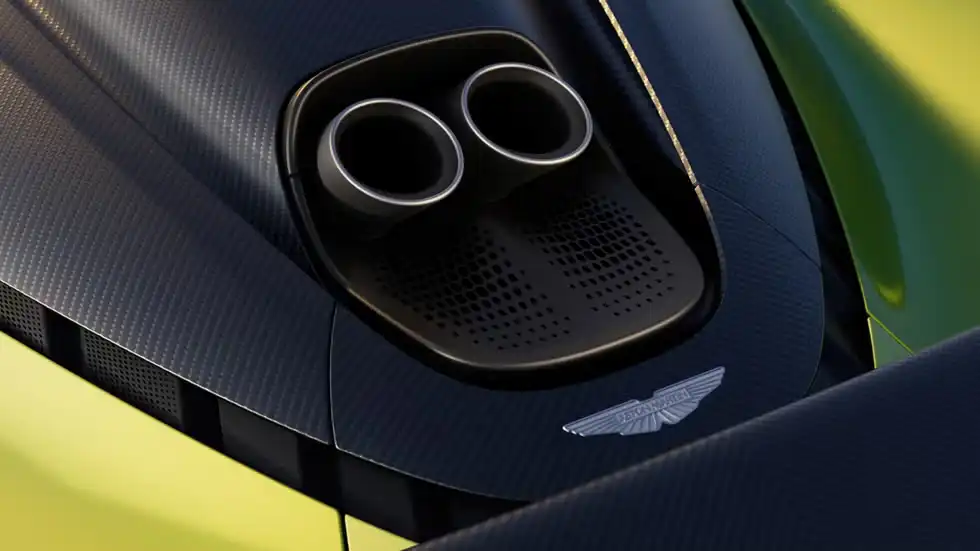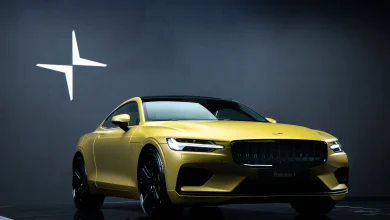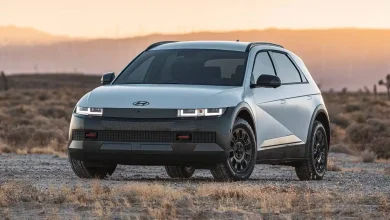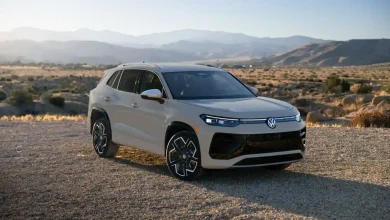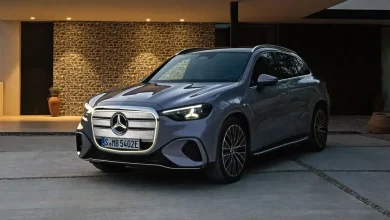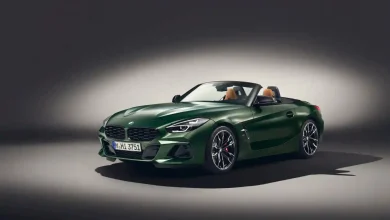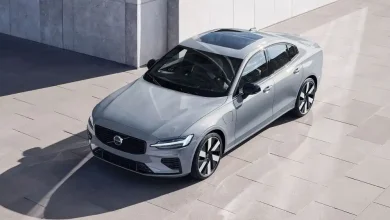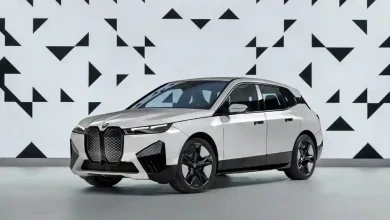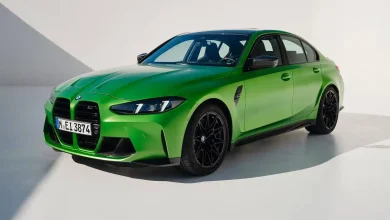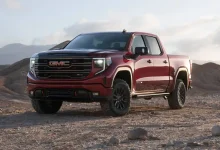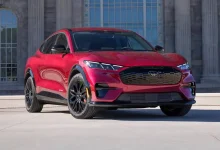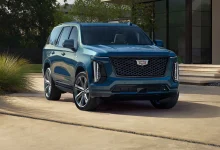2026 Aston Martin Valhalla – Overview
The 2026 Aston Martin Valhalla has been a long-anticipated entry into the elite world of mid-engine hybrid supercars. Originally revealed as the AM-RB 003 concept in 2019, the Valhalla is now on track for production, with deliveries expected to begin by mid-2025. Like its track-focused sibling, the Valkyrie, the Valhalla is a road-legal performance machine heavily inspired by Formula 1, built with cutting-edge materials and advanced aerodynamics.
Its dramatic exterior design features a bold reinterpretation of Aston Martin’s signature grille, sleek airflow-optimized bodywork, and eye-catching dihedral doors. Beneath the sculpted surface lies a carbon-fiber monocoque, emphasizing lightness and rigidity.
Powering the Valhalla is a potent twin-turbocharged V8 sourced from Mercedes-AMG—Aston’s F1 engine partner—paired with a sophisticated plug-in hybrid system. Together, they generate a staggering 1064 horsepower. The V8 drives the rear wheels, while a pair of electric motors independently power the front axle, creating a highly responsive all-wheel-drive setup.
Performance claims are impressive: a 0–62 mph sprint in just 2.5 seconds (likely an underestimate) and a top speed of 217 mph. The Valhalla also features a pure EV driving mode with an estimated electric range of about nine miles—ideal for short, emissions-free journeys.
This isn’t just a supercar—it’s a statement. A fusion of Aston Martin elegance and F1-derived performance, the Valhalla marks a new chapter for the brand’s electrified future.
When Is The 2026 Aston Martin Valhalla Coming Out?
Aston Martin plans to commence production of the Valhalla in mid-2025, with deliveries expected shortly thereafter. The production run is limited to 999 units, emphasizing the exclusivity of this model.
What’s New for 2026 Aston Martin Valhalla ?
After years of anticipation and speculation, the wait is nearly over—the Aston Martin Valhalla is officially scheduled to arrive as a 2026 model. Customer deliveries are expected to begin in the latter half of 2025, finally bringing this long-awaited hybrid supercar from concept to reality, ready to turn heads on upscale streets and dominate iconic racetracks.
Pricing and Which One to Buy
The 2026 Aston Martin Valhalla is expected to command a starting price of around $1 million—a figure befitting its rarity and performance pedigree. Production will be strictly limited, with Aston Martin capping the run at just 999 units globally.
| Trim | Starting MSRP (est.) |
|---|---|
|
Valhalla
|
$1,000,000 (est)
|
As for which version to buy, options will likely be few given the car’s bespoke nature, but each Valhalla will offer a uniquely tailored experience. Enthusiasts are already speculating—and hoping—that an open-top variant could join the lineup down the road, adding even more exclusivity to this high-performance hybrid.
Engine, Transmission, and Performance
At the heart of the 2026 Aston Martin Valhalla lies a cutting-edge plug-in hybrid powertrain that blends sheer power with sophisticated engineering. The centerpiece is a 4.0-liter twin-turbocharged V8 engine sourced from Mercedes-AMG, featuring a flat-plane crankshaft for a sharper throttle response and higher rev range. This internal-combustion beast powers the rear wheels through Aston Martin’s first-ever eight-speed dual-clutch automatic transmission, with torque precisely managed by an electronically controlled limited-slip rear differential.
Supplementing the V8 are three electric motors—two mounted up front driving the front wheels, and a third integrated into the transmission. Together, this hybrid system produces a combined 1064 horsepower, enabling blistering acceleration and razor-sharp response. Reversing duties are handled exclusively by the electric motors, underscoring the car’s forward-thinking tech.
Built on a carbon-fiber monocoque chassis, the Valhalla keeps weight down while maximizing rigidity. The suspension system borrows heavily from Formula 1, with a pushrod front setup and multi-link rear architecture, all paired with adaptive dampers for precision control. Massive carbon-ceramic brakes come standard, providing exceptional stopping power.
Aerodynamics are just as impressive: the Valhalla features active aero elements, including movable front and rear wings that dynamically adjust to optimize downforce, reduce drag, and enhance cornering stability and braking. With its race-inspired hardware and head-turning looks, the Valhalla promises an exhilarating, world-class driving experience that goes far beyond the ordinary.
0–60 MPH Times
Aston Martin estimates that the Valhalla—the brand’s self-proclaimed “ultimate driver’s supercar”—can rocket from 0 to 62 mph in just 2.5 seconds. However, considering the car’s immense 1064-horsepower hybrid powertrain and advanced all-wheel-drive system, that figure might actually be conservative.
We anticipate even quicker real-world results once independent testing is possible. As soon as we get the opportunity to strap our test gear onto one of these ultra-rare machines, we’ll share the official numbers. One thing’s for sure—the Valhalla will be brutally fast.
Fuel Economy and Real-World MPG (or MPGe)
Interior, Comfort, and Cargo
The interior of the Aston Martin Valhalla is a striking fusion of high-performance design and minimalist luxury. Crafted with a heavy emphasis on carbon fiber, the cabin exudes a motorsport-inspired aesthetic while keeping weight to an absolute minimum. Every detail is purpose-built, with form closely following function.
Dominating the cockpit is a Formula 1–style rectangular steering wheel, complete with tactile controls for the infotainment system. Just beyond it sits a column-mounted digital display that shifts functionality depending on the driving mode—showing a race-oriented linear tachometer in Race mode and essential info like speed and navigation during road use.
A structural carbon crossbeam spans the cabin, acting as both a visual centerpiece and a functional support. Perched atop it is a floating central infotainment screen, delivering key data such as battery status, hybrid energy deployment, and system diagnostics.
The seating layout reflects the Valhalla’s track-focused intent. Driver and passenger are positioned low in fixed carbon-fiber bucket seats designed for support and stability during spirited driving, though long-distance comfort may take a backseat. As for practicality, cargo and storage space are likely to be minimal—if present at all—which is typical for a car so singularly focused on performance.
Infotainment and Connectivity
While Aston Martin has yet to reveal full details about the Valhalla’s infotainment setup, the supercar is expected to debut the brand’s next-generation user interface. This system should bring a modern, streamlined experience that balances high-tech features with the car’s focused driving ethos.
Though specifics remain under wraps, it’s reasonable to expect support for Apple CarPlay and Android Auto, along with built-in navigation for on-the-fly route planning. A premium audio system will likely be offered, although in a machine so driver-centric, the engine note may be the most compelling soundtrack.
Safety and Driver-Assistance Features
Despite its track-bred DNA, the Aston Martin Valhalla won’t skip over modern safety technologies. While many supercars prioritize performance above all else, the Valhalla incorporates a thoughtful array of driver-assistance systems typically found in more practical vehicles.
Traditional side mirrors are present, but they’re enhanced by a cabin-mounted rearview display that uses camera feed for improved visibility. This hybrid approach blends familiarity with futuristic tech, boosting situational awareness without sacrificing aesthetics.
Although crash-test results for the Valhalla have not yet been released, buyers can expect the following key safety features to be available:
-
Automated emergency braking
-
Adaptive cruise control
-
Blind-spot monitoring
For updates on crash-test ratings, prospective owners should refer to the NHTSA and IIHS websites once the Valhalla is officially evaluated.
Warranty and Maintenance Coverage
2026 Aston Martin Valhalla – Full Specifications
| Specification | Details |
|---|---|
| Engine | 4.0L Twin-Turbo V8 |
| Electric Motors | 3 (2 front, 1 rear) |
| Combined Power | 1,064 hp |
| Torque | 811 lb-ft |
| Transmission | 8-speed Dual-Clutch |
| 0–62 mph | 2.5 seconds |
| Top Speed | 217 mph |
| Electric-Only Range | 9.3 miles |
| Battery Capacity | 6.1 kWh |
| Curb Weight | 3,650 lbs (approx.) |
| Chassis | Carbon Fiber Monocoque |
| Production Limit | 999 units |
| Starting Price | ~$800,000 |
Final Verdict
The 2026 Aston Martin Valhalla stands as a testament to the brand’s commitment to innovation, performance, and luxury. With its advanced hybrid powertrain, cutting-edge technology, and striking design, the Valhalla is poised to become a benchmark in the supercar segment. Its limited production run and formidable capabilities make it a highly desirable vehicle for collectors and enthusiasts alike.
2026 Aston Martin Valhalla Videos
